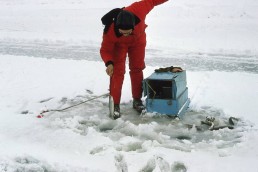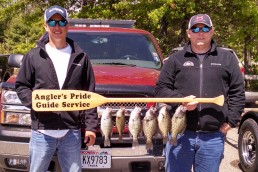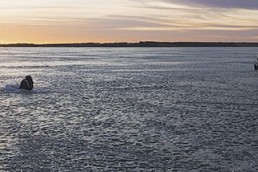Keeping it Simple Produces Icy Fish from Ohio Waters
SHARE THIS POST
Hopefully, real ice will still come to the Buckeye ponds and lakes later this winter. And if it does, ice hikers will be out there in record time, which is great, because ice fishing has a lot going for it. One simple fact is that ice fishing is probably the most productive of the fishing sports. Since there’s usually no current under the ice, it becomes a “precise” sport and you can fine-tune your equipment to make it do exactly what you want.
I’ve headed forth many times and taken 50 bluegills or crappies or made a good catch of largemouth bass (usually released) or picked up a limit of perch or some dandy walleyes. And fish taken from ice water are as tasty as they’re ever going to be.
There can be years without as much fishing in winter, and give or take some action on steelhead or below the dam for saugeyes, often, ice fishing can be the only game in town.
But I’ve got to mention that in my personal opinion this sport is the most dangerous in the state. I’ve ice fished in Ohio and Michigan for many years, and I’m still here, but that’s because I’m ultra-conscious of the potential danger—and I take no chances at all.
Farm ponds are almost invariably the first to produce good, “safe” ice, so these are the first I’ve always fished. And when I visit a new pond or even an old one I’ve worked for years, I step out on the ice only a few feet and drill a hole to see just how thick it is. If it doesn’t suit me I walk away.
Are you enjoying this post?
You can be among the first to get the latest info on where to go, what to use and how to use it!
I always carry a couple of screwdrivers in a coat pocket. And while some may laugh, I usually carry 100 feet of rope or more that I tie around my waist and then to a shore-side dock or tree. When fishing bigger water, I drill the same shore-side holes, then if others are fishing out there, I walk in a well-trodden trail to the fishing grounds—and still carry the rope. If I don’t need it someone else might, and it always has a strong loop at the end, just in case.
Given that, farm pond fishing definitely isn’t rocket science. These early fish are almost always in the deepest part of the pond, usually somewhere from mid-lake down to near the dam. And they’re almost invariably right above the bottom. So, I take two short ice rods and rig them with a 1/4-ounce sinker on the line’s end with two short side lines above: one set to be within inches of the bottom, the other, 1 foot or less above. And I like to tie tiny ice spoons to the ends of the side lines, always white on one, and maybe red, yellow, chartreuse or black on the other. I use four different spoons on the four lines to see if they have color preferences that day.
Tiny jigs in various colors work too, and I’ve caught fish on them, as well as ice flies. For bait, I almost invariably use waxworms. I’ve tried maggots, spikes, and mealworms, but the waxworms have always produced best for panfish and bass. If there’s a secret to ice fishing, it’s to jig your baits. Gently jig one rod up and down just 1 inch or 2, and then let it rest a moment while you jig the other. Panfish like movement; it attracts their attention, and the next time you move the rig they’ll usually bite.
For larger waters you’ll use much the same tactics, but it’s always wise to get maps by Googling the Ohio Division of Wildlife and checking for deeper holes. If there’s no time, just walk out to where others are fishing and start boring holes.
Finally, if you’re catching nothing within 20 minutes or so, move and move again until you find action. And, use the smallest float that will hold your rigs up, usually no more than a nickel in size. I adjust my floats so they’re half submerged, and even the lightest touch from below will sink them. Simple rules, but they’ll catch you some fine late-winter dinners.
MWO
SHARE THIS POST
Did you enjoy this post?
You can be among the first to get the latest info on where to go, what to use and how to use it!
Richard Martin
Dick Martin is a retired biology teacher with a bachelor’s degree in Biology from Ohio U. and a master’s degree in Zoology from Ohio State U. He is a longtime member of Outdoor Writers of Ohio and Outdoor Writers Association of America. He and has written many outdoor articles on a variety of subjects.



